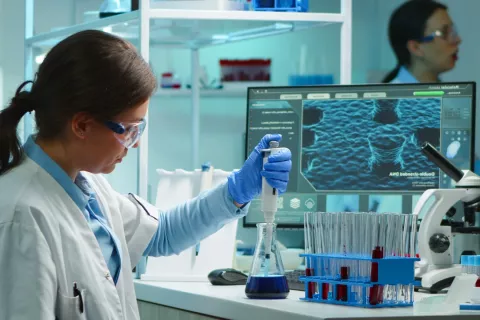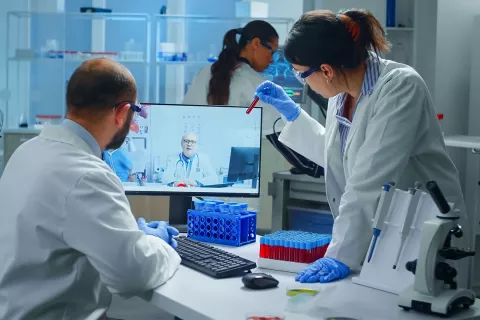In the pharmaceutical industry, ensuring the quality and safety of drug products is paramount. One critical aspect of this is controlling impurities, which are unintended substances that may arise during the manufacturing process, from raw materials, or through storage. When an impurity exceeds the established specification limit, it is classified as an Out-of-Specification (OOS) impurity. Such instances demand prompt and robust investigations including (but not limited to) toxicological risk evaluation to determine the impact on product quality, safety and compliance. This blog intends to explore the toxicological approaches and risk assessments that can be utilized to address OOS impurities effectively.
Understanding Out-of-Specification (OOS) Impurities
The OOS impurities can be broadly categorized into:
- Process-related impurities: These arise from raw materials, intermediates, or by-products of the manufacturing process.
- Degradation products: These result from the chemical breakdown of the drug substance during production, packaging, or storage.
- Excipients or leachables: Contaminants introduced through packaging materials or excipients.
The International Council for Harmonisation (ICH) guidelines (ICH Q3A, Q3B, and Q3D) provide guidance for control and management of impurities in drug substances (DS) and drug products (DP). Similarly, various pharmacopoeias (for example, USP, BP, IP) provides information on standards and quality specifications for medicines used in that country or region. However, when any impurity surpasses the specific levels or thresholds, the impurity(ies) are subjected to investigation including evaluation of its safety (health-hazard assessment) by performing a thorough toxicological risk assessment.
Step-by-Step Toxicological Evaluation
1. Impurity Identification and Characterization
The first step is to identify and chemically characterize the OOS impurity. This involves techniques such as:
- Mass spectrometry (MS)
- Nuclear magnetic resonance (NMR)
- High-performance liquid chromatography (HPLC)
This characterization helps to determine whether the impurity is a novel entity or a known compound.
2. Risk Assessment
The toxicological risk assessment evaluates the potential impact of the impurity on patient safety. Key factors in toxicological risk assessment include:
- Dose-related toxicity: Assessing whether the level of impurity poses any risk based on its maximum daily exposure (MDE).
- Duration of exposure: Considering the treatment duration (acute, chronic, or lifetime) of drug product, whether the exposure to impurity has any potential concerns like carcinogenicity or other systemic toxicity due to duration of exposure (longer versus shorter duration).
- Patient population: Evaluating risk for specific groups such as paediatric, geriatric, or immunocompromised individuals.
All identified impurities must first be characterized based on available genotoxicity data. If no genotoxicity data is available, the OECD validation principles for (Q)SAR models (statistical and expert rule-based prediction models) should be applied to predict mutagenicity. For (Q)SAR analyses, there are several software tools built on the principles of ICH M7 requirement are readily available. Based on (Q)SAR assessment, if impurities predicted to be mutagenic, a mitigation strategy should be implemented following the ICH M7 guideline and should be controlled in accordance with ICH M7 recommended TTC approach.
For non-mutagenic impurities, no further action is required if they are present within the specified limits. However, if these impurities exceed the specified limits, two potential approaches should be considered:
- Qualification Based on Available Data: Evaluate the impurities using available toxicity, ADME data, alongside carcinogenicity, mutagenicity, reproductive toxicity, sensitization and local toxicity hazards. A risk characterization should involve exposure assessment and calculation of margin of safety based on MDE.
- Conducting Additional Mutagenicity Testing: If the mutagenicity predictions yield equivocal results, perform a genotoxicity study, such as the Ames test. In cases where risk assessment is insufficient due to the high levels of impurity compared to the specified limits, a repeat-dose toxicity study in rodent model (duration of study aligned with the duration of treatment with the drug product in humans) may be required to qualify the impurity in drug substances or products.
3. Decision-Making and Regulatory Compliance
Once the toxicological data is compiled, a decision is made regarding the fate of the batch with the OOS impurity. Possible outcomes include:
- Reprocessing: Removing or reducing the impurity to acceptable levels.
- Release with justification: Demonstrating that the impurity level does not compromise safety, efficacy and quality of the product.
- Rejection: Discarding the batch if the impurity poses a significant risk.
The justification and supporting data are documented and submitted to Regulatory authorities for review. Clear communication and adherence to Regulatory guidelines are critical to maintaining compliance.
Conclusion
Toxicological approach to managing OOS impurities is an important consideration for ensuring pharmaceutical safety and Regulatory compliance. By leveraging advanced analytical techniques, risk assessment frameworks, and expert toxicological evaluations, manufacturers can effectively address OOS impurities on a case-by-case basis. Proper scientific approaches and expert opinions are indispensable in qualifying impurities and safeguarding patient health.










